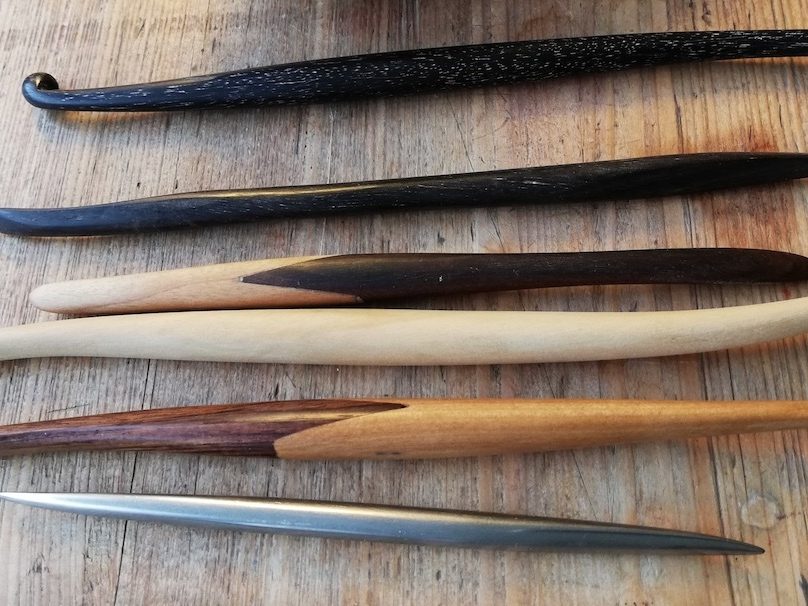Leonor Antunes, whose installation occupied the Portuguese pavilion at the Venice Biennale last year, is currently represented in the group exhibition “Interiorities.” In the context of the show, she designed an art edition for Haus der Kunst, which was created in cooperation with Porzellan Manufaktur Nymphenburg.
In her works, Leonor Antunes establishes imaginative references to and between the biographies and works of artists as well as modernist architects and designers. The artist is also interested in the artistic production process itself: the place where a work is created, the local craftmanship traditions and the specific individuals and workshops involved in the work’s production.
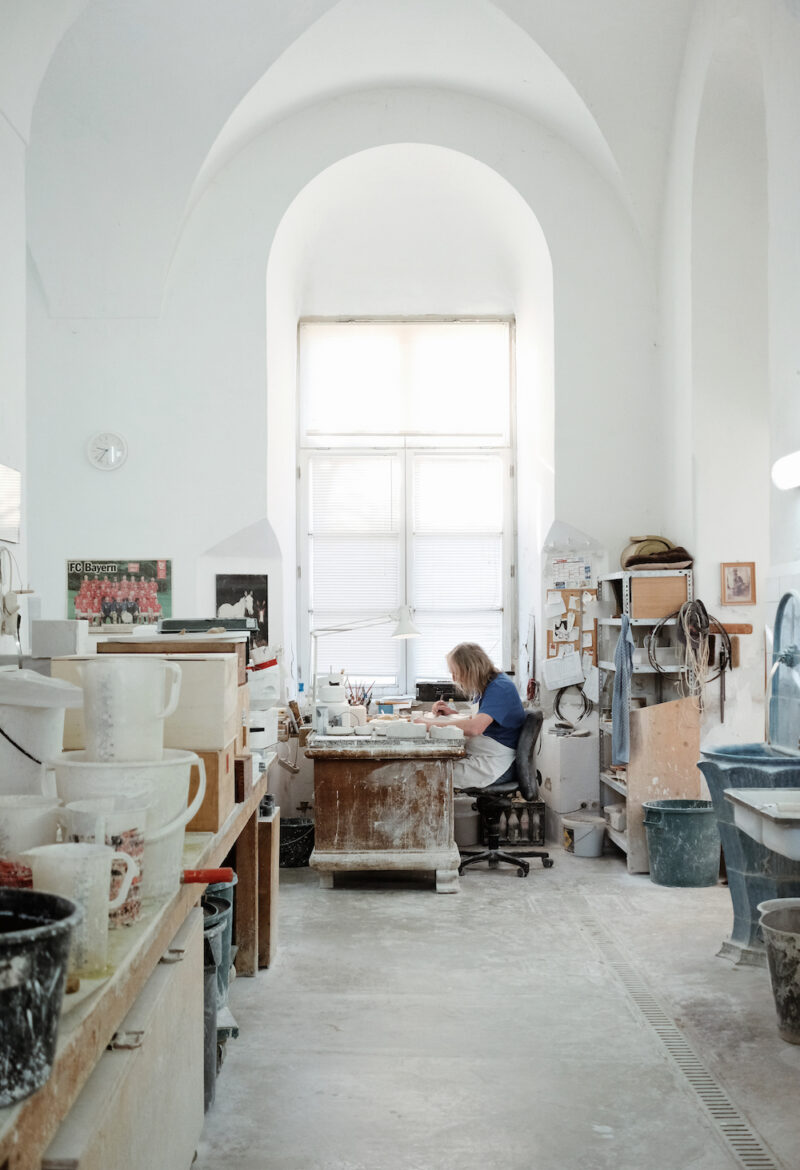
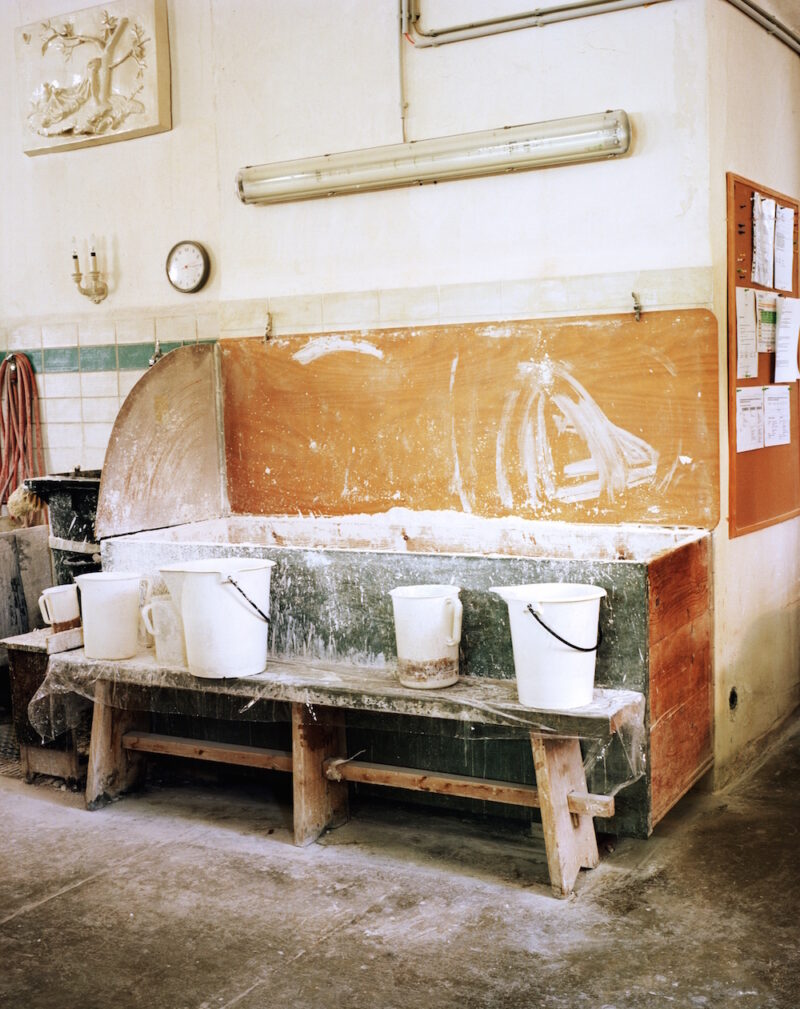
The edition “a set of tools by Günter Löscher” (which Leonor Antunes realized for Haus der Kunst in cooperation with Porzellan Manufaktur Nymphenburg in the context of the exhibition “Interiorities”) demonstrates the essential importance of these aspects for her artistic work. Both the series of porcelain sculptures produced at Nymphenburg and her works in the exhibition poetically cross the boundaries between art and everyday design, artistic genius and collaborative craftsmanship in practice.
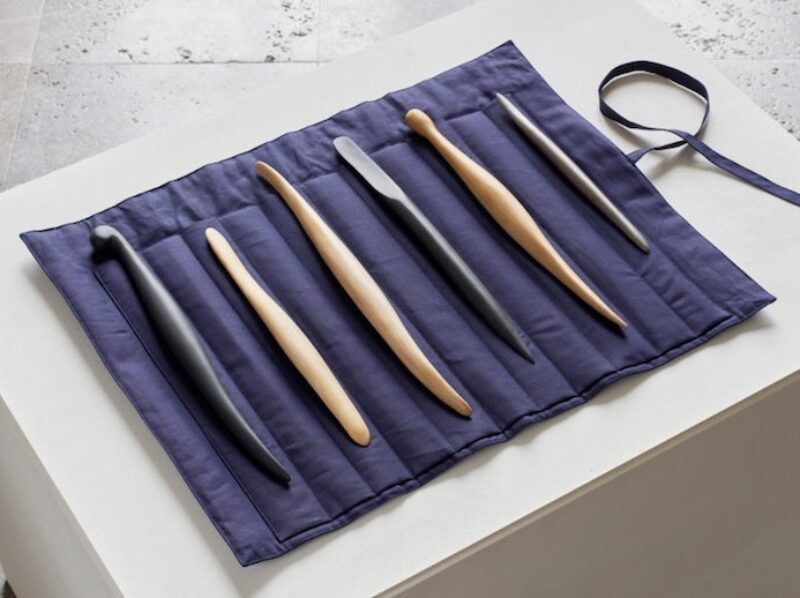
Antunes’ work approach is based on the properties of the materials she employs; whether wood, brass, cork, leather or glass, her pieces are strongly based on the properties of the material of which they are made. By choosing the porcelain manufactory as the inspiration and production site for her art edition, Antunes expanded her own material repertoire, whereby in the production of this edition she could draw on the years-long experience and know-how of the local artisans. Antunes was inspired by the tradition-rich company with its employees, some of whom have been at the manufactory for several decades, which still produces porcelain objects entirely by hand.
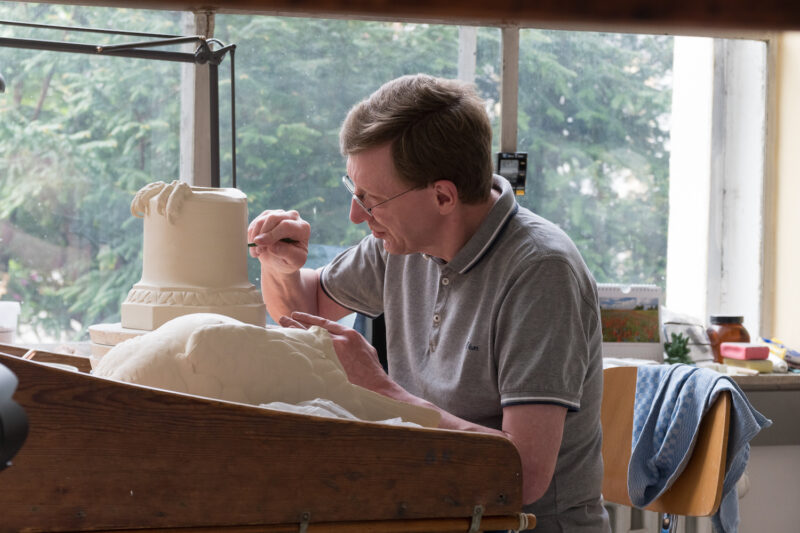
In its manufacturing of porcelain objects, Porzellan Manufaktur Nymphenburg foregoes the use automated manufacturing processes. From the mixing of the porcelain mass to the production of the molds into which the porcelain mass is later poured, to the filigree finishing, painting and firing of the objects: each step in the production process is executed manually by an employee who has been specially trained in this craft and who remains immortalized with his or her initials in the final product.
Antunes was attracted to the manufactory because of the traditional forms of craftmanship it embodies and its appreciation of individuality within the standardized work production process. On her first visit to Nymphenburg, Günter Löscher, the head of the molding workshop, told her that many of the company’s employees make the tools they need for their work practice themselves. Löscher, who has been with the company since 1975, showed the artist his carefully maintained tools made of various materials, which he adapted to his individual work practice and which have served him well over the years.
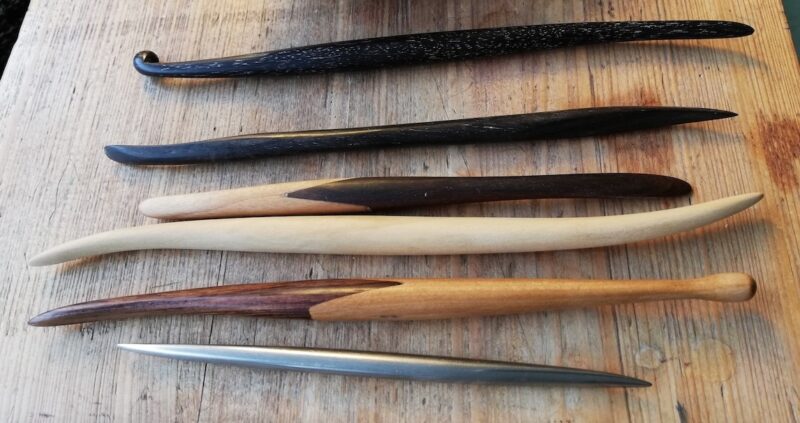
Antunes’ art edition, as the title of the work emphasizes, is based on some of Günter Löscher’s own handmade tools. By enlarging the filigree tools (a deliberate exaggerated reversal of the shrinking process that occurs during the porcelain firing process), the objects lose their technical utility and become works of art.
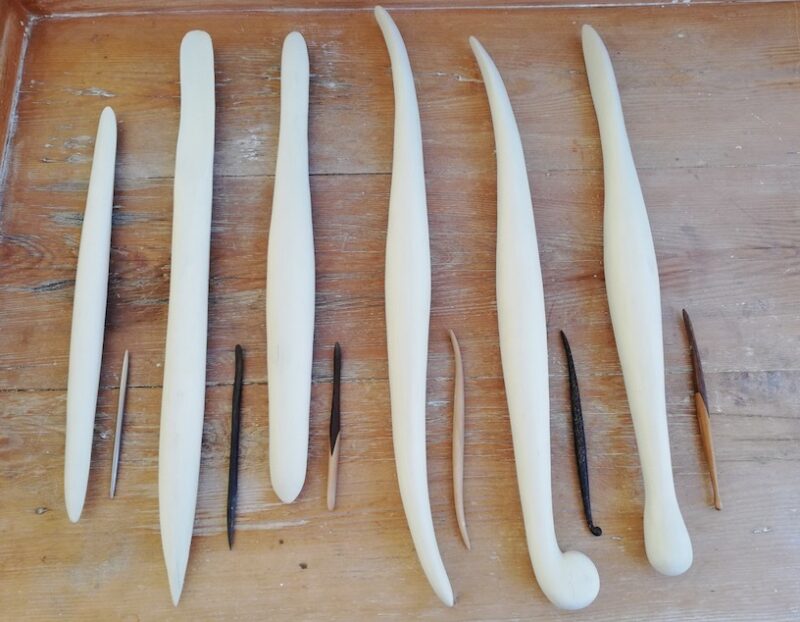
The creation of the “porcelain sculpture set” required various steps. First, the molding workshop made all six tools – greatly enlarged – out of a malleable porcelain mass. Based on these original pieces, corresponding plaster molds were then made in the model workshop. In a subsequent step, liquid porcelain was poured into those molds, which, after the porcelain dried and its surface finished, were then baked at 1400°C for about 24 hours. Following the firing process, the porcelain objects were sent to the finishing workshop for post-processing, after which by the porcelain painters painted them to resemble the original tools.
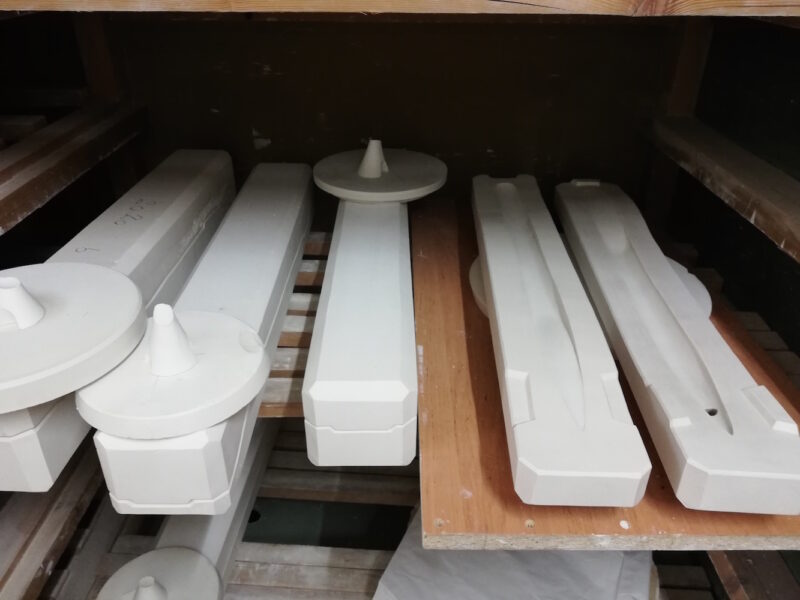
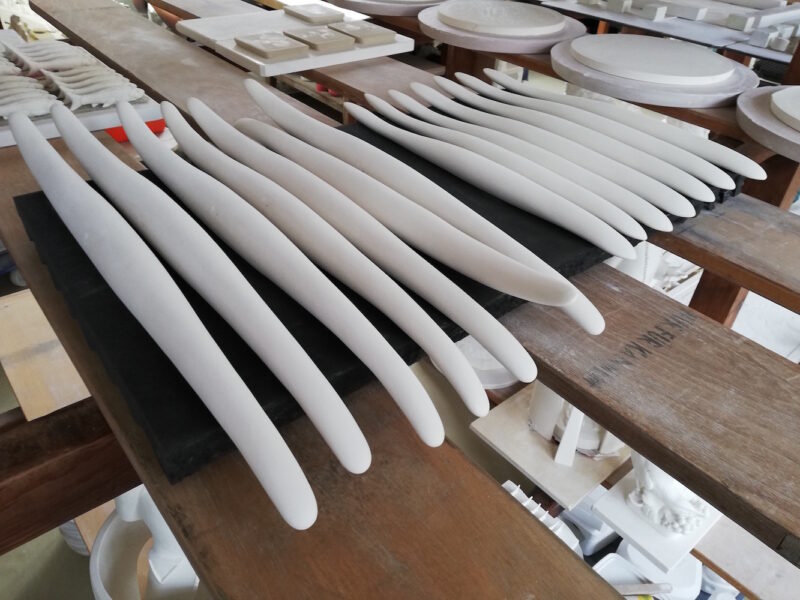
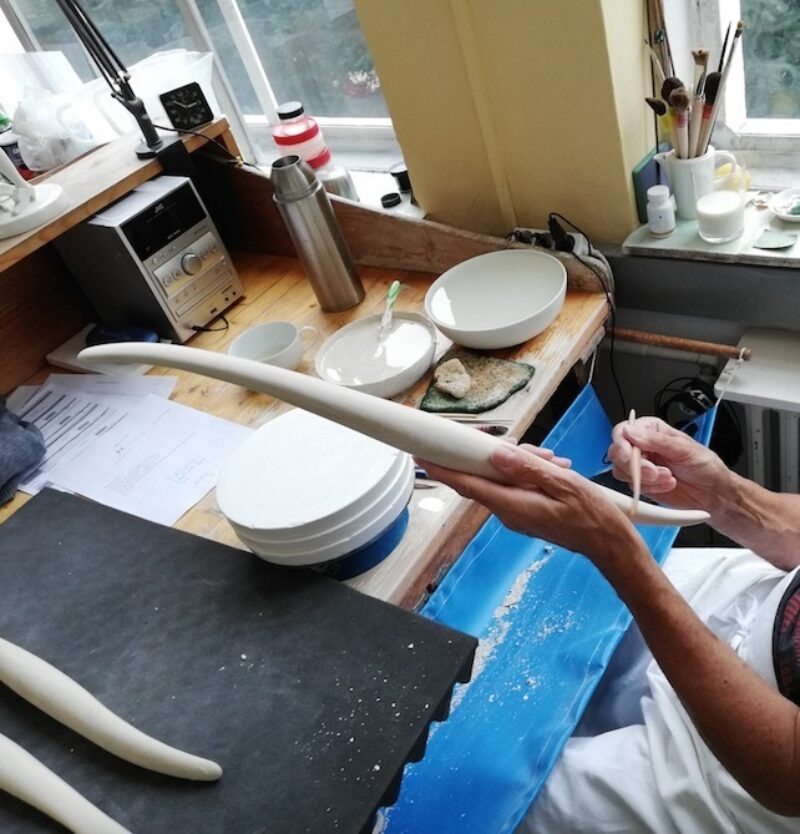
The finished elegant porcelain sculptures, which are stored in a bespoke cloth cover, reveal the shape and material properties of the original tools – wood and metal – as well as the signs of wear and tear from years of use, to which Antunes thus pays tribute.
Dimona Stöckle is a curatorial assistant at Haus der Kunst and has been working on the exhibition "Interiorites. Njideka Akunyili Crosby, Leonor Antunes, Henrike Naumann, Adriana Varejão". She was involved in the collaboration of the artist with Porzellanmanufaktur Nymphenburg and the creation of the art edition.
More information on the art edition and possibilities to order
